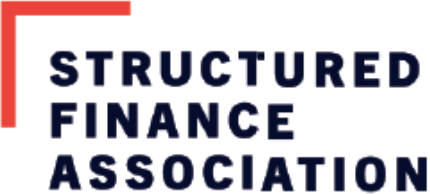Senate Passes CARES Act
Provided by Structured Finance Association
Late on Wednesday night, March 25, the Senate passed H.R. 748 the “Coronavirus Aid, Relief, and Economic Security (CARES) Act,” on a 96-0 vote. This is the third piece of legislation aimed to combat the economic consequences of the COVID-19 pandemic. A broad framework of the deal was agreed on between Senate Republicans and the White House early in the morning on March 25, but nearly 24 hours were needed to resolve remaining differences and hash out technical drafting errors in the bill.
The CARES Act comes with a $2 trillion price tag, the largest in U.S. history, and builds on the two former pieces of COVID-19 legislation. It provides more robust unemployment benefits, sends many Americans a $1,200 per person check, incentivizes and compensates businesses to keep workers employed, increases aid to states, spends more on hospitals, offers targeted tax relief, and enacts other tax and spending changes.
It also provides $500 billion for Treasury’s Exchange Stabilization Fund for loans, loan guarantees, and investments in the Federal Reserve’s lending facilities to support states, municipalities, and “eligible businesses,” which include air carriers and U.S. businesses that have not received “adequate economic relief” in the form of other loans or loan guarantees.
The $500 billion will be allocated as follows:
- $25 billion in loans and loan guarantees for air carriers;
- $4 billion in loans and loan guarantees for air cargo carriers;
- $17 billion in loans and loan guarantees for businesses critical to maintaining national security; and
- $454 billion for loans, loan guarantees, and investments in support of facilities established by the Federal Reserve to support lending to eligible businesses, states, and municipalities.
The Federal Reserve programs include the Money Market Mutual Fund Liquidity Facility, the Commercial Paper Funding Facility, the Primary Dealer Credit Facility, the Primary Market Corporate Credit Facility, the Secondary Market Corporate Credit Facility, and the Term Asset-Backed Securities Loan Facility. Additional information on federal facilities is available here. The Act also requires the Treasury Secretary to publish application procedures and minimum requirements for loans, loan guarantees, and other investments within 10 days of enactment.
Foreclosure Moratorium and Consumer Right to Request Forbearance
Section 4022 of the Act allows borrowers with a ”Federally-backed mortgage loan” to request forbearance, regardless of delinquency status and without penalties, fees, or interest, by submitting a request to the borrower’s servicer and affirming financial hardship due to COVID-19. Forbearance must be granted for up to 180 days and extended for an additional period of up to 180 days at the request of the borrower (the initial or extended forbearance can be shortened). It is worth noting the bill provides the structure for 12 months of forbearance but does not supply additional liquidity for mortgage servicers. Section 4023 allows multifamily borrowers with a “Federally-backed multifamily mortgage loan” that was current on February 1, 2020 may also request a forbearance for up to 30 days, with two additional 30-day extensions. The measure also bars the servicer of a “Federally-backed mortgage loan” from initiating any foreclosure process, move for a foreclosure judgment or order of sale, or execute a foreclosure-related eviction or foreclosure sale for at least 60 days beginning on March 18, 2020 (except for a vacant or abandoned property). Full analysis available here.
Delay of CECL Standard
The bill extends the final implementation date of FASB’s current expected credit loss (CECL) standard for insured depository institutions or bank holding companies through earlier of December 31, 2020 or the declared end of the national emergency. During the 24 hours of negotiations, SFA worked to have all institutions (including but not limited to banks, non-banks, captive finance companies such as auto finance companies, etc.) included in a provision delaying implementation of the CECL standard. Although the final bill remained limited to insured depositories and bank holding companies, SFA and industry allies remain committed to exploring regulatory and additional legislative alternatives for a uniform delay of CECL for all institutions. View SFA’s CECL delay letter here.
Next Steps for Passage
The House of Representatives is scheduled to convene at 9:00 a.m. on Friday, March 27, to consider passage of the “Phase III” COVID-19 response bill. Communications to SFA from the offices of Majority Leader Steny Hoyer (D-MD) and Minority Whip Steve Scalise (R-LA) both advised that due to limited flight options, members participating in self-quarantine, and several states mandating stay-at-home orders, they expect the bill to pass the House by voice vote on Friday. However, Members who want to come to the House Floor and debate the bill will be able to do so, and House Democratic leaders are working to ensure that members unable to return to Washington may express their views on the legislation remotely. House leadership intends on fulfilling their pledge to allow members 24 hours to read and review the bill.
Speaker Pelosi: “We’re probably going to need more money”
House and Senate Republicans are split on the need the need for future legislation. Some lawmakers have suggested focusing on rapidly implementing the first three phases and considering other regulatory recommendations before working on “Phase IV”. But House Speaker Nancy Pelosi (D-CA) said “Phase III” would not be the last COVID-19 legislative relief bill and signaled she plans on returning to the negotiating table with the White House for any future legislative relief.

